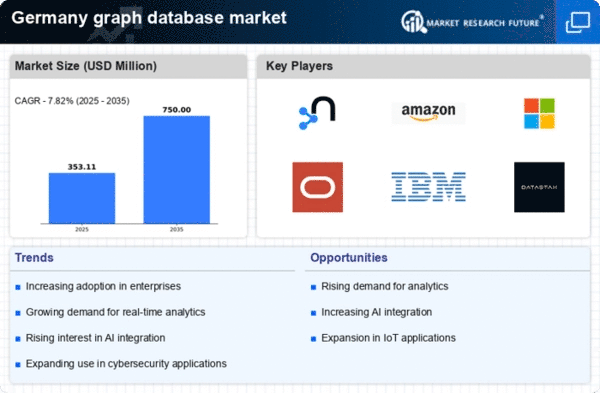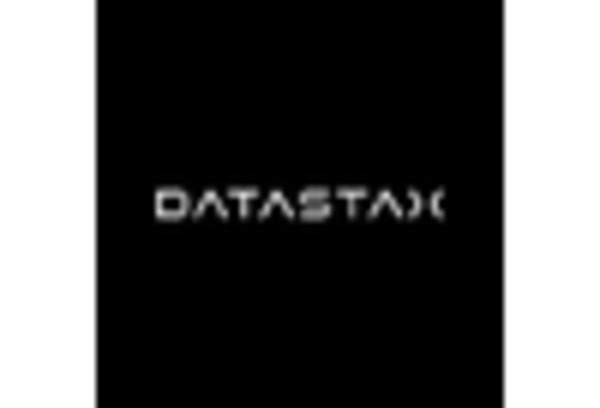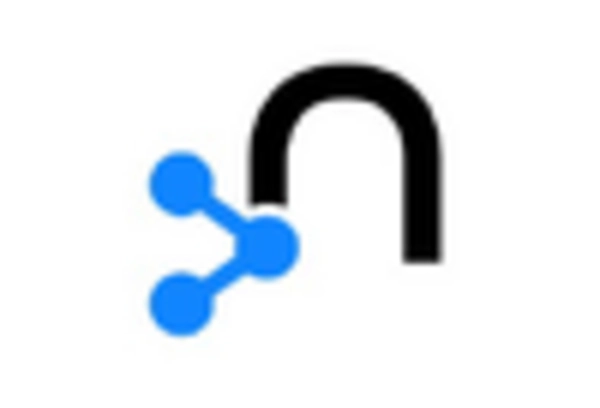Expansion of IoT Applications
The proliferation of Internet of Things (IoT) devices in Germany significantly influences the graph database market. As IoT applications generate vast amounts of interconnected data, traditional databases struggle to manage these complex relationships effectively. Graph databases offer a robust solution, enabling organizations to visualize and analyze data from diverse sources seamlessly. In 2025, the market is expected to expand by 30%, largely due to the increasing integration of IoT technologies across various industries, including manufacturing and smart cities. This growth underscores the potential of graph databases to support innovative IoT applications, enhancing operational efficiency and data-driven decision-making.
Growing Need for Enhanced Customer Insights
In the competitive landscape of Germany, businesses are increasingly focused on gaining deeper customer insights to drive engagement and loyalty. The graph database market plays a crucial role in this endeavor, as it allows organizations to analyze customer behavior and preferences through interconnected data points. By leveraging graph databases, companies can uncover hidden patterns and relationships, leading to more personalized marketing strategies. The market is projected to grow by 20% in 2025, reflecting the rising importance of customer-centric approaches in various sectors, including retail and e-commerce. This trend highlights the value of graph databases in enhancing customer relationship management and driving business success.
Rising Demand for Real-Time Data Processing
The graph database market in Germany experiences a notable surge in demand for real-time data processing capabilities. As businesses increasingly rely on instantaneous data insights for decision-making, the need for efficient data management solutions becomes paramount. Graph databases, with their ability to handle complex relationships and provide rapid query responses, are well-positioned to meet this demand. In 2025, the market is projected to grow by approximately 25%, driven by sectors such as finance and telecommunications, where real-time analytics are critical. This trend indicates a shift towards more dynamic data architectures, emphasizing the importance of graph databases in facilitating agile business operations.
Advancements in Data Integration Technologies
The graph database market in Germany is significantly impacted by advancements in data integration technologies. As organizations strive to consolidate data from multiple sources, the ability to integrate diverse datasets becomes essential. Graph databases excel in this area, providing a flexible framework for linking disparate data types and sources. In 2025, the market is anticipated to grow by 22%, driven by the increasing need for comprehensive data solutions across industries such as healthcare and finance. This growth suggests that graph databases will continue to play a pivotal role in enabling organizations to harness the full potential of their data assets through effective integration.
Increased Focus on Fraud Detection and Prevention
The graph database market is witnessing a heightened focus on fraud detection and prevention, particularly in sectors such as banking and insurance in Germany. As fraudulent activities become more sophisticated, organizations are turning to graph databases to identify complex patterns and relationships that traditional systems may overlook. By analyzing interconnected data, businesses can enhance their fraud detection capabilities and respond more effectively to emerging threats. The market is projected to grow by 18% in 2025, reflecting the urgent need for advanced analytical tools in combating fraud. This trend indicates that graph databases are becoming indispensable in safeguarding organizational integrity and financial stability.

















Leave a Comment